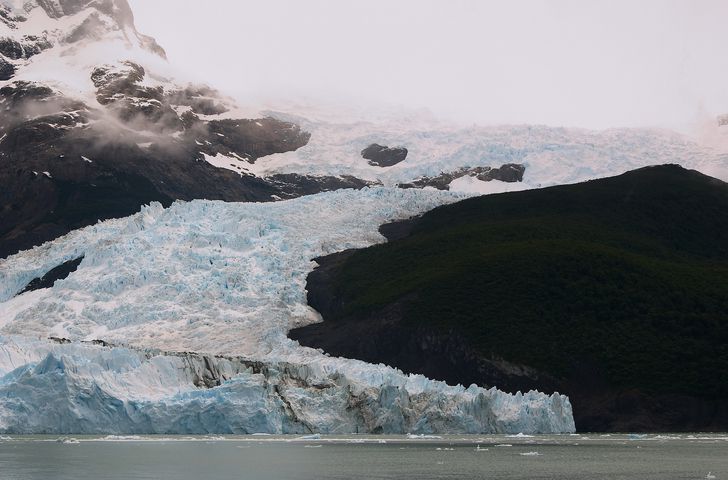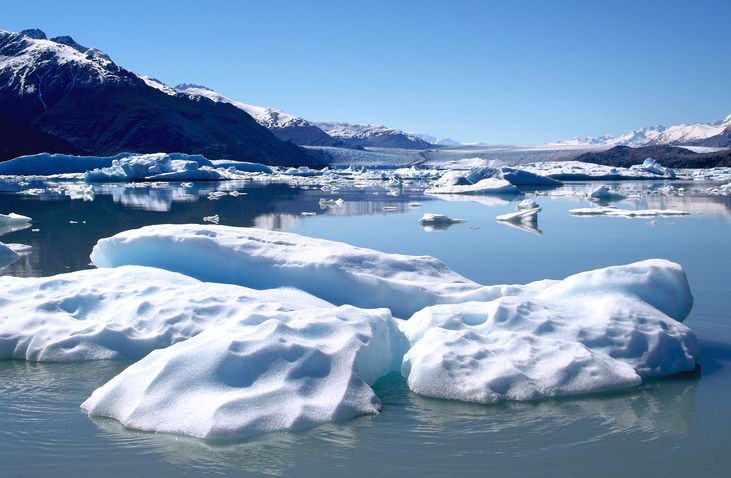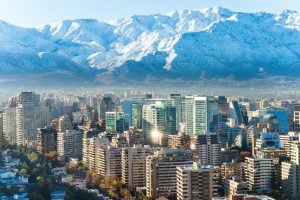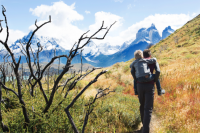Often overshadowed by the impressive Perito Moreno Glacier also located in Los Glaciares National Park in Argentina, Upsala Glacier deserves more recognition for its unique and record-breaking traits. So here are seven fascinating facts about this incredible glacier.
Upsala Glacier is one of many located in Los Glaciares National Park
The UNESCO World Heritage Site, Los Glaciares National Park in the southwest of Argentina is best known for being the location of Perito Moreno Glacier, Argentina’s most famous and where hundreds of thousands of tourists flock each year. But ice covers over 40% of this national park and the Upsala Glacier is one of 47 glaciers in the area, all of which are fed by the Southern Patagonian Ice Field.
It’s the largest in South America
 Taking the crown as the largest glacier in the whole of the South American continent, it is 336-sq.miles (870km²) in area, 37-miles (60km) long and 230 ft. (70m) high.
Taking the crown as the largest glacier in the whole of the South American continent, it is 336-sq.miles (870km²) in area, 37-miles (60km) long and 230 ft. (70m) high.
It’s far larger than its more famous cousin, Perito Moreno, which only covers 97-sq.miles (250km²) in area and has a length of 19-miles (30km) and a height of 240 ft. (74m).
It’s one of several glaciers that feed into Lake Argentino
 The milky blue waters of Lake Argentino and Lake Viedma are a product of the glacier melt that flows down from the surrounding ice. Glaciers Perito Moreno, Mayo, Spegazzini, Agassiz, Onelli, Ameghino and Upsala feed into these lakes.
The milky blue waters of Lake Argentino and Lake Viedma are a product of the glacier melt that flows down from the surrounding ice. Glaciers Perito Moreno, Mayo, Spegazzini, Agassiz, Onelli, Ameghino and Upsala feed into these lakes.
And it’s responsible for the strange color of Lake Argentino
All lakes that are fed by glaciers tend to be characterized by a distinctive milky green hue. Lake Argentino is no exception and its color is a result of the processes of glaciation.
The glaciers that feed into it produce “rock flour”, a white powder formed when a glacier scrapes and erodes the ground below as it moves down a mountain. This dust is then carried into the water and changes its color.
Upsala Glacier is named after a Swedish university
The first university to sponsor glaciological studies in Los Glaciares National Park was Uppsala, a Swedish university located 44-miles (71km) from the capital, Stockholm.
Upsala, like many other glaciers in Patagonia, is retreating at an alarming rate
NASA images have shown that since 2001, the position of the ice front (the snout or foot of the glacier) of Upsala has retreated 2-miles (3km). Unfortunately, this follows the trend in Patagonia and indeed, across the world, where nearly all glaciers have seen substantial retreats in the past few decades because of climate change.
And is becoming increasingly difficult to access


 Known for the extensive calving of ice at its foot, Upsala Glacier has actually been mostly inaccessible since 2008, when a series of huge icebergs calved into Lake Argentino, blocking the approach to the glacier.
Known for the extensive calving of ice at its foot, Upsala Glacier has actually been mostly inaccessible since 2008, when a series of huge icebergs calved into Lake Argentino, blocking the approach to the glacier.
Although boats still attempt to get close to Upsala, it’s a test in steering as they must now weave between the icebergs dotted in the water. As a consequence, the foot of the glacier has not been seen in years. Instead, boat tours that sail as close as possible to Upsala Glacier actually get better views of nearby Spegazzini Glacier.
No comments yet
There are no comments on this post yet.





Leave a comment